Ever find yourself doom-scrolling through your feed, then suddenly get whiplash from the latest “it bag” everyone’s hyping? Trust me, I’ve been there—loading up carts only to wonder if that price tag is runway real or just digital smoke-and-mirrors. Here’s the thing: while some luxury names are all flash and no substance, others genuinely back up their four-figure prices with craftsmanship, heritage, and sweet resale value. So let’s jump into the only 15 brands actually worth every penny—they’re the real MVPs of the luxury world.
1. Louis Vuitton
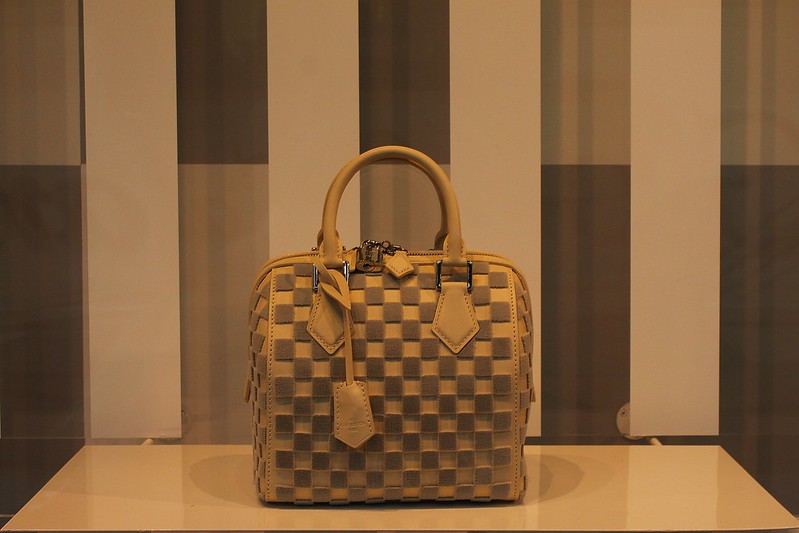
Listen, we’ve all been there: drooling over those iconic LV monograms on Instagram Reels as if they hold the secret to everlasting happiness. But trust me, this brand isn’t just social media candy—it’s a vault of value. According to a deep dive by Market.us, Louis Vuitton topped the 2025 luxury goods charts with a whopping $124.3 billion brand valuation, proving that your splurge might just be a two-in-one of style and smart money. Its Monogram canvas isn’t just a pretty pattern; it was invented in 1896 to fight counterfeiters, and those coated canvases can survive rainstorms, wine spills, and even your dog’s teeth—then still fetch big bucks in the resale market. The drop architecture that LVMH deploys turns a simple bag launch into must-watch TV, keeping hype machines humming globally. And let’s not ignore the celeb effect: if Rihanna and BTS can carry it, your Instagram story gains instant aspirational aura. Resale whispers even have some classic shapes trading above retail, so that bag you splurged on might pay you back in elbow room for more splurges later.
On a more real talk level, Louis Vuitton’s return-to-retail ratio on secondhand sites sometimes exceeds 100%, making these bags as investment-grade as some stocks. The brand’s flagship stores feel like grown-up playgrounds where your wallet willingly limps out after every visit. Add in collaborations from Supreme to Jeff Koons, and Louis Vuitton threads your wardrobe with cultural street cred. Basically, if you’re going to drop four figures on an accessory, LV proves it’s not just a purchase—it’s more of a lifestyle stock pick. And in a world of fast fashion dumpster fires, owning something built to last and styled by history feels satisfying on both your feed and your finances.
2. Hermès

Ever get that thrill when you catch someone actually walking out of a jeweler’s with a Birkin on their arm? That adrenaline rush isn’t just envy talking—it’s Hermès doing what it does best: turning bags into treasure hunts. FashionUnited pegs Hermès at a cool $27 billion brand valuation, thanks in no small part to its exclusivity model that keeps shoppers on “will they, won’t they?” lists for months. Each Birkin requires up to 48 hours of handiwork by expert artisans, and if even one stitch is off, the entire piece is scrapped—talk about zero room for error, which is basically the face of perfection. These waiting lists are legendary, rivaling Coachella ticket scalpers in hype, and only spiking demand further. It’s not about just owning a bag; it’s about the chase, the bragging rights, the “I finally got it” high. The Kelly, with its sleek lines and structured silhouette, leans into “quiet luxury,” drawing in those who prefer a silent but oh-so-declared status symbol.
But Hermès isn’t all ego and FOMO—its scarves and belts have their own cult followings. Silk scarves sell out in minutes, then resell for multiples on auction sites, making them the ultimate wearable art pieces. And while it might feel absurd to drop five figures on a bag, know that Hermès doesn’t chase quarterly profits: it’s privately held, focused on legacy over leverage. Their leather goods division alone raked in nearly half of sales last year, proving that year-after-year devotion is more than just hype—it’s a testament to timeless craftsmanship. In a snap-and-forget world, Hermès’ approach to ‘slow luxury’ feels almost revolutionary, reminding us that patience might actually be part of the price you pay.
3. Chanel
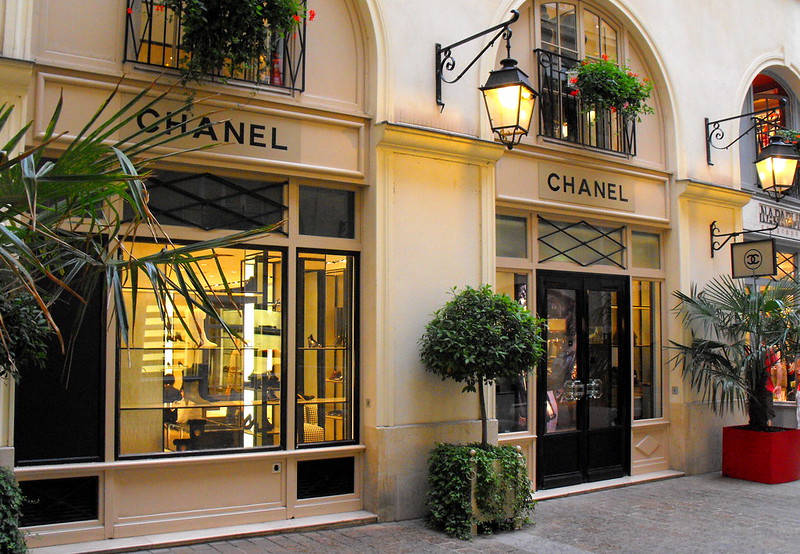
Chanel’s little black dress is the reason we all have that “quiet envy” look when scrolling IG—it’s timeless, it’s iconic, and somehow never feels dated. As reported in Vogue Business, Chanel could hit $20 billion in sales this year, proving that its boucle-tweed suits and quilted flaps are still headline-grabbing material. Every stitch in a 2.55 bag is deliberate: the chain strap doubles as a security measure, the interlocking Cs are more than just flair—they’re brand DNA. Meanwhile, their No. 5 perfume remains the gold standard, a fragrance that’s as much a statement piece as an accessory—you might as well wear it in the air. Coco’s original vision was to liberate women from corsets, and nearly a century later, the house is still championing that spirit of freedom—only now it comes in a framed tweed jacket. Eye Candy might be loud monograms, but Chanel whispers power, making you look forward to a subtle flex.
Beyond apparel, the brand’s forays into beauty and eyewear show a rare versatility. Their lipsticks and fragrances get major buzz, not because they change the game, but because they consistently perfect it. The atelier’s runway shows—the ones staged in the Grand Palais or at Versailles—feel more like art exhibitions than fashion week, underlining Chanel’s commitment to heritage. Even as many luxury houses chase fleeting trends, Chanel holds tight to its archives, revealing new collections that always nod to the classics. And let’s not ignore the storyline: without a chief designer, the maison’s atelier team managed to pull off a celebrated haute couture show, demonstrating that the brand’s strength isn’t tied to a single creative mind but to a legacy of craftsmanship. In a world of disposable trends, Chanel’s age-defying allure feels like a breath of fresh, fragrance-laced air.
4. Gucci
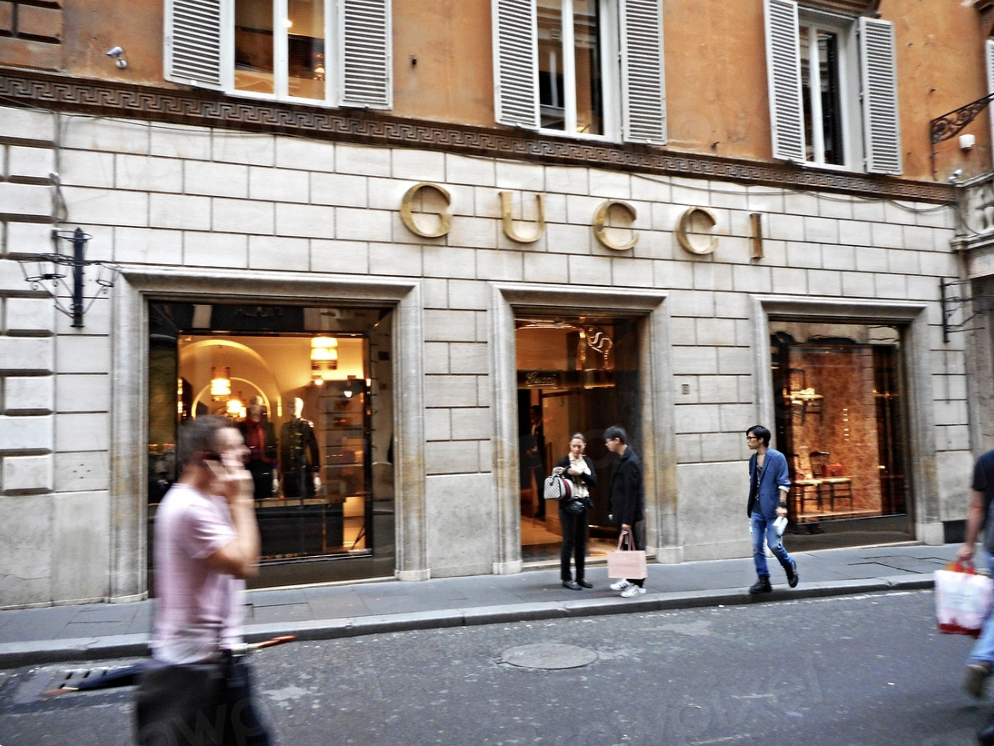
Remember when Gucci was everywhere, then suddenly felt like the avocado toast of fashion—overhyped and overpriced? Well, newsflash: after a 25% sales drop in Q1 2025, Gucci is getting its groove back, thanks to new creative vibes from Demna Gvasalia. Per a Reuters report, parent company Kering has revamped operations and costs are tighter than your skinny jeans. The real kicker? Gucci’s monogrammed loafers and belt bags are still killer hits on global street-style forums, showing that the brand’s core appeal never really left us. And hello, if the Gucci Ace sneaker can become a resale darling, you know the hype machine is still chewing. Let’s not forget: Gucci’s runway shows—think club-ready bling and ’70s glam—have that wow factor that social-feed algorithms crave. Even their beauty line is thriving; their Bloom fragrance has cult status among perfume collectors.
Beyond the buzzy prints and maximalist maxims, Gucci’s leather goods and ready-to-wear quality have been quietly leveling up, proving they’re not just flash-in-the-pan noise. Their House x Adidas collab sold out faster than concert tickets, merging sportswear and couture in a way that feels effortlessly cool. And in resale circles, certain styles have held prices remarkably well; apparently, once you’re Gucci, you never lose your luxe cred. While other houses are trimming collections, Gucci is selectively expanding into Asia and the Middle East, where buying power is skyrocketing. So, if you were tempted to ghost Gucci last season, now’s the time to RSVP to their renaissance.
5. Dior
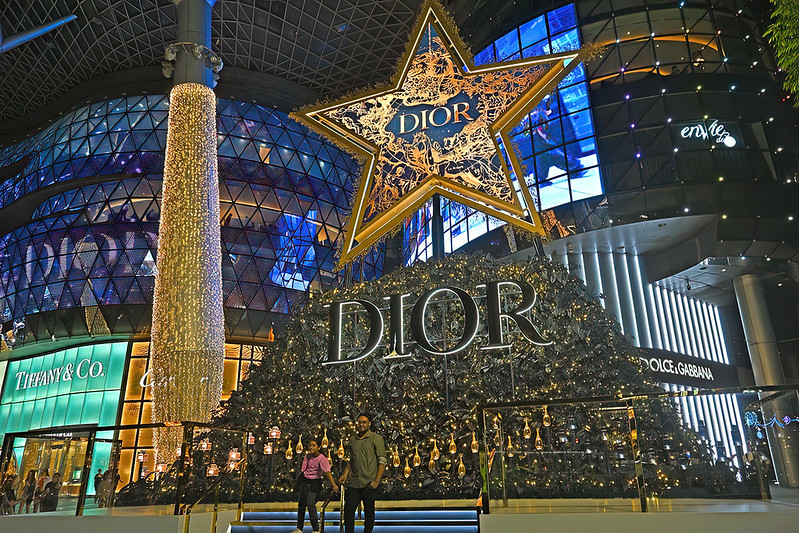
Over the past few years, Dior has gone from “nice couture house” to financial juggernaut, with sales nearly quadrupling from €2.7 billion in 2018 to over €9 billion in 2023. According to Business of Fashion, that kind of growth isn’t just luck—it’s a crush of strategy, storytelling, and sensational visuals. Business of Fashion The Lady Dior bag alone defined a generation’s handbag goals, while the Dior Saddle and Book Tote tapped straight into millennial hashtag culture. Creative director Maria Grazia Chiuri revitalized the brand by fusing feminism with Christian’s original “New Look,” sending ripples through runway and real life. Meanwhile, Dior Sauvage—the fragrance—smells like success, topping charts with comeback stories more epic than any reality TV reunion. Store openings in London, Tokyo, and Singapore felt like mini Louvre exhibits, each shop doubling as an art installation. Collaborations with brands like Nike SB turned sneakers into overnight streetwear collectibles.
But Dior isn’t just about flash-in-the-pan moments. Their atelier teams maintain couture craftsmanship that rivals museum-worthy exhibits; a single custom piece can take hundreds of hours to complete. Limited-edition collections—like Dior x Rimowa—sell out before you finish adding them to your cart. Even vintage Dior jackets appreciate on resale sites, where collectors pay premiums for archival designs. And while many fashion houses are chasing low-cost shortcuts, Dior maintains hand-painted finishes and hand-stitched hems, which actually justify that three- or four-figure price tag. If you’re going to spend big on fashion, Dior’s blend of high-octane theater and top-tier textiles proves it’s more than a passing obsession—it’s a wardrobe mountain you actually want to climb.
6. Cartier
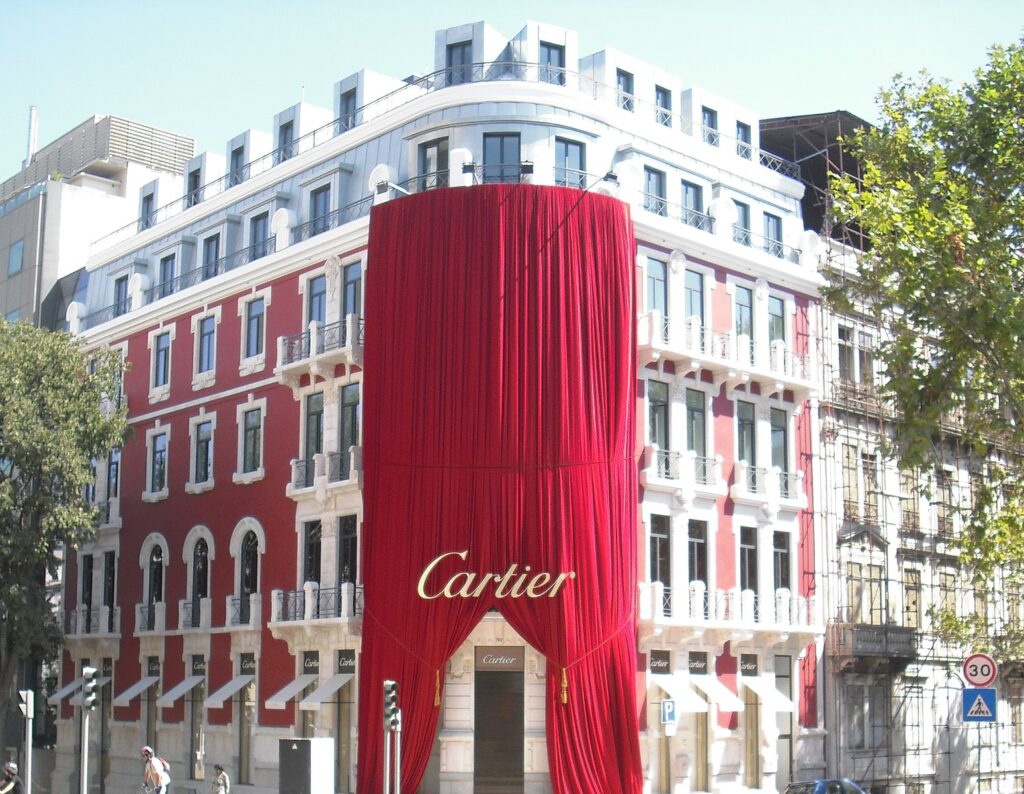
Cartier has been flexing its royal credentials since 1847, and those crowned panther motifs have adorned more wrists than your favorite Netflix drama’s main characters. The storied maison boasts a $10.6 billion valuation after a 7% jump—proof that its Love bracelet, designed in 1969, still locks in desirability decades later. The bracelet’s tiny screwdriver and minimalist band concept turned an everyday gesture into a jewelry-object-lesson in eternal commitment. But Cartier is far from one-note: their Tank watch, conceived in 1917, remains an Art Deco icon on the wrists of everyone from Andy Warhol to Princess Diana. High-jewelry creations, each dripping in diamonds and emeralds, land at auctions where jaw-drop bidding is the norm. And those vintage Cartier clips—panther-head masterpieces—often resell for more than their original price, making them prized heirlooms rather than fleeting splurges.
On the timepiece side, the Santos and Ballon Bleu offer precision mechanics wrapped in sleek design, ensuring that your watch will tick for generations. Custom orders mean that your piece is as unique as your fingerprint, from rare gemstones to bespoke engravings. Cartier’s high jewelry ateliers also stage museum-worthy exhibitions, turning diamonds into art installations. Scarcity is engineered through limited collections and invitation-only previews, making each drop feel as exclusive as a private gala. Beneath the glitter, the brand’s parent Richemont ensures that quality control is so strict, any imperfection triggers a runway back to the workshop. Simply put, Cartier is one of those rare houses where a six-figure price tag doesn’t just buy jewelry—it secures a slice of fashion history wrapped around your wrist.
7. Rolex
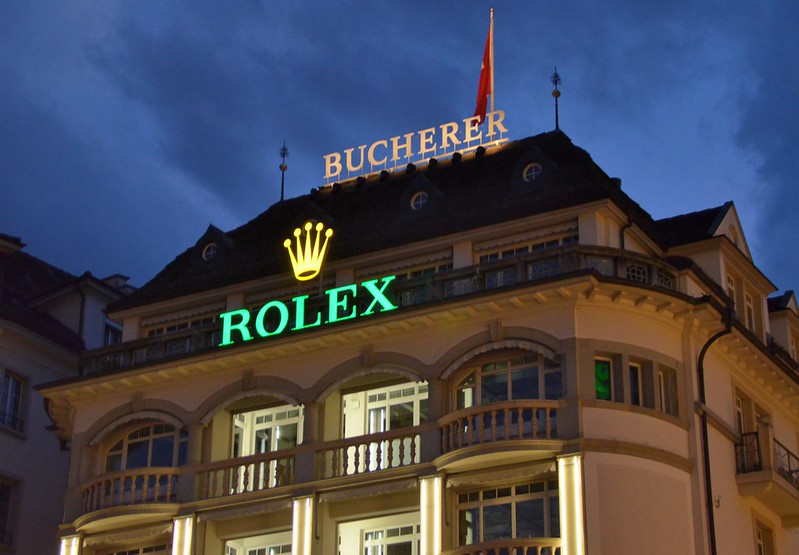
Okay, we all know Rolex is the crown jewel of wrist flexing, but did you know these timepieces actually moonlight as mini investment portfolios? Most Rolex models command an average premium of around 21.6% above retail on the secondary market, making them as much an asset class as a status symbol. Many models require months of saving, but enthusiasts say the wait and price premium only add to the brand’s legendary mystique. From the Submariner’s dive-ready lineage to the Daytona’s motorsport legacy, each model has its own fan club of collectors ready to pay hand over fist. And while waiting lists at authorized dealers can stretch for years, savvy buyers turn to the secondary market to snag their dream watch—just be prepared to cough up above retail if you want it tomorrow. Rolex’s vertical integration—crafting everything from gold alloys to movement components in-house—keeps quality on lockdown.
These watches aren’t just pretty faces: they’re built to endure deep dives, extreme temperatures, and your daily hustle, which is why you’ll see them scaling snow-capped peaks and starring in boardroom photos. A certain exclusivity is baked into the purchasing process: no sweatshop production lines here, just meticulous Swiss craft. Vintage Daytonas and Paul Newman dials regularly shatter auction records, turning Rolex into a safe haven in your portfolio. Meanwhile, the Datejust’s timeless silhouette makes it the everyday hero for both CEOs and YouTubers. And if you ever decide to sell, you might find yourself with a nice profit instead of a depreciating asset. Bottom line? A Rolex isn’t just a good buy, it’s a smart one—and your wrist will thank you for years to come.
8. Prada
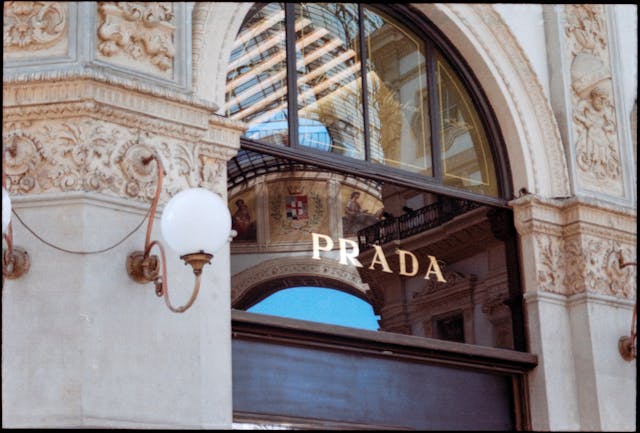
Prada is like that low-key friend who somehow always looks put together without screaming for attention, and their minimalism is mighty lucrative. Prada clocks in at around $5.1 billion in brand value—proof that sixties-inspired nylon backpacks and pared-back silhouettes pack real punch. Their sleek Saffiano leather totes are practically bulletproof and feel exclusive without slapping a logo in your face. Creative director Miuccia Prada has mastered the art of flipping expectations: she takes utilitarian nylon and turns it into runway gold. Prada’s runway shows feel more like performance art, with unexpected set designs that echo pop culture and archival references. There’s an authenticity in their understated aesthetic that resonates with the “quiet luxury” crowd.
In the world of accessories, their nylon belts and reimagined bucket hats have become cult staples, with devotees waiting in lines that make streetwear drops look tame. Prada’s experimentation with tech fabrics keeps them ahead of the curve, blending form and function so that your bag is ready for rain or runway. Seasonal collections are tight drops, so scarcity works in their favor without screaming “limited edition” on every label. Collaborations with adidas recently mixed sportswear DNA with high-fashion vibes, creating items that sell out before you can say “Prada Superstar.” The brand’s leather goods division alone contributes massively to revenue, underlining that this isn’t just a niche label. Post-pandemic, Prada also ramped up digital initiatives, marrying e-commerce sleekness with in-store personalization, showing that minimalism and innovation can go hand-in-hand.
9. Ferrari
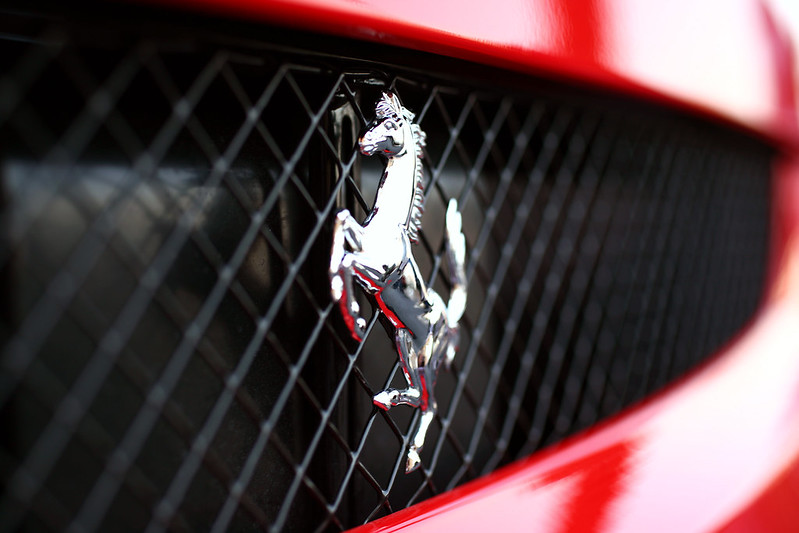
Think luxury is just leather and lace? Tell that to Ferrari, whose prancing horse emblem has galloped straight into the luxury brand Hall of Fame. Ferrari’s blend of hand-built craftsmanship and limited production runs has helped its share price climb even as many other luxury stocks stumble. Post-IPO, the brand even trades on the NYSE, turning car lovers into shareholders overnight. Every Ferrari model is a bespoke performance symphony, built for speed junkies who aren’t afraid to sweat a little carbon fiber. With only about 13,000 cars made in 2024, owning one feels like belonging to an elite club where the guest list is extremely short. And don’t get me started on the waitlists—some buyers sign up five years before their Model FXX even hits concept stage.
On top of that, Ferrari’s collector market is red-hot, with certain supercars appreciating in value as if they were blue-chip stocks. Their design language—Italian curves meet technical bravado—makes each chassis a rolling sculpture. The company also taps into racing royalty by translating F1 innovations directly into road cars, so your morning commute becomes part of a motorsports legacy. Meanwhile, personalized finishes, from bespoke stitching to exclusive paint hues, guarantee that no two Ferraris are quite the same. Add in experiences like test drives at Maranello and invitations to track days, and you have a brand that sells not just cars but adrenaline-fueled memories. For those looking to invest in something that purrs as good as it pays off, Ferrari might just be the ultimate flex.
10. Moncler
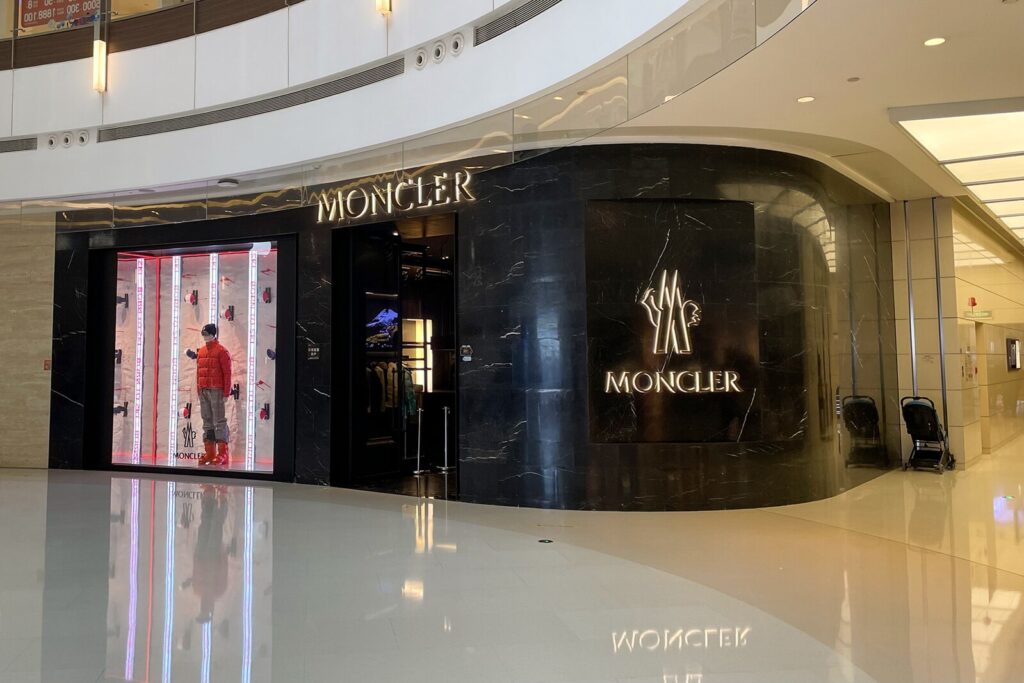
Moncler’s down jackets might look like bubble wrap, but these bad boys are engineered for more than just Insta-worthy street cred. The brand started in an alpine village in 1952, outfitting mountaineers for Everest climbs, and somehow turned puffers into urban armor—suddenly your daily commute feels like a backcountry expedition. With fill powers that make them practically cloud pillows and quilt stitching that could survive a polar vortex, Moncler makes winter feel like a fashion adventure. Their iconic Grenoble line fuses technical performance with runway pizzazz, so you’re just as ready for a snowcat ride as you are for cocktails at après-ski. Limited-edition collabs like Moncler Genius involve designers from Craig Green to JW Anderson, creating instant collector’s pieces that sell out faster than concert tickets. Moncler’s signature glossy shell colors, from sunrise orange to glacier white, have become digital catnip for your winter grid. You’ll spot celebs from Gigi Hadid to Balmain’s floor staff rocking Moncler, so you know it’s not just outdoor gear anymore.
In a world of disposable trends, Moncler’s jackets actually hold value: secondhand editions often resell for nearly the original price, making them rare commodities in a plastic-wrapped resale market. Their global network of boutiques feels like a mountain chalet meets avant-garde gallery, complete with flaming torches and digital ski tracks. And when gas stations might run out of coffee cups, Moncler reliably delivers innovation with heated jacket variants and sustainable down initiatives. Plus, the brand’s commitment to eco-friendly practices, like recycling old puffers into new parkas, makes you feel good about your splurge. For those who want both function and flair, Moncler proves that a ski lodge staple can be a city essential—no chairlift required.
11. L’Oréal
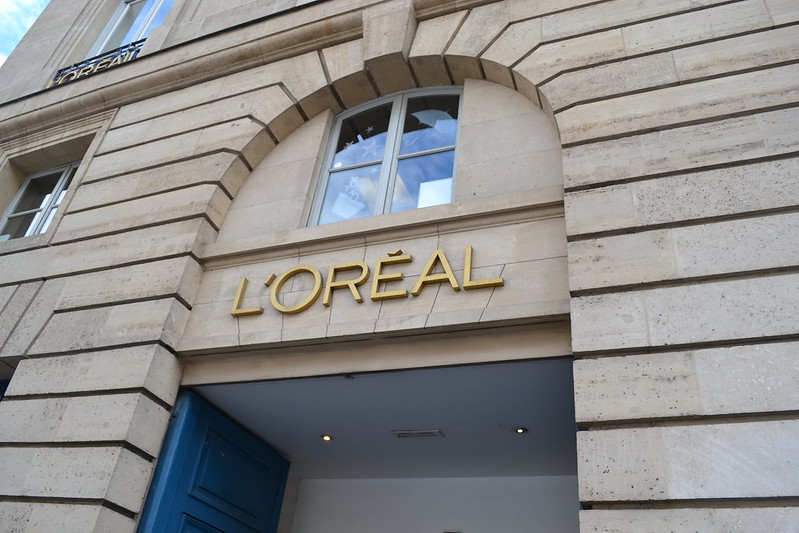
L’Oréal might not roar down streets like an Italian supercar, but its luxury beauty division deserves just as much respect. L’Oréal Paris snagged a $14.8 billion brand value with a 9% year-on-year increase, underscoring that luxe lotions and lipsticks can be financial game-changers. From Lancôme’s fall programs to YSL Beauty’s matte lip stains, their portfolio reads like a VIP guest list at a beauty expo. The research budgets behind those serums could rival tech startups, fueling innovations like bioprinted skin models and pigment-perfect AI shade matches. You’re not just buying a face cream; you’re tapping into decades of R&D that feels like a skincare PhD. And let’s not ignore the packaging: every bottle, compact, and tube is engineered to open like a treasure chest.
Their influencer game is on point, with millions of likes parading Dior and Gershon-chic unboxings across TikTok. Meanwhile, their global distribution network means you can snag a couture foundation in Paris, Seoul, or Dubai without breaking a sweat. Limited-edition beauty collections—like Gucci makeup collabs—drive frenzy, turning counters into collection counters. Despite a crowded market, L’Oréal’s Luxe brands show resilience: even during GDP slowdowns, high-end beauty sales hold strong. And in the war for eyelash reclaimers, L’Oréal’s lash-extension tech makes regular mascaras look like child’s play. Simply put, if you want your ledger and your glow-up to align, splurging on L’Oréal’s luxury roster is a solid move.
12. Burberry
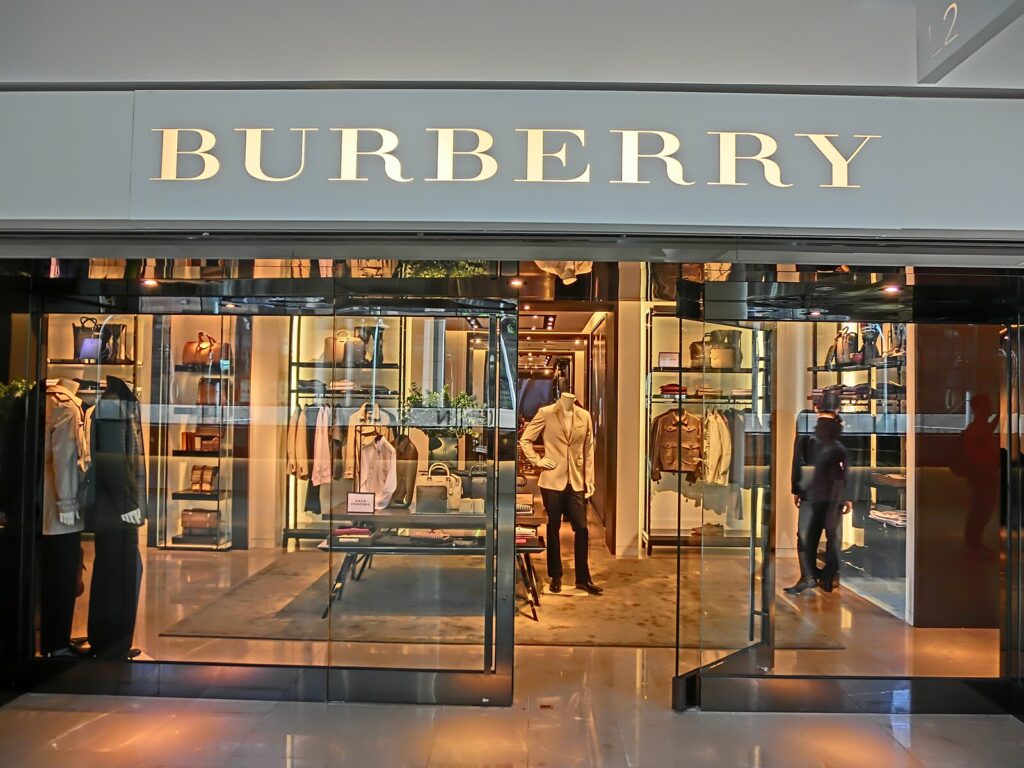
Back when Burberry’s check was on every tourist neck, you might’ve written it off as souvenir chic. But fast-forward to now: Burberry’s trench coat is the James Bond of jackets—timeless, stunt-double tough, and dripping in understated flair. That signature gabardine fabric, invented in 1879, repels rain like a champ, making you look polished when London sprinkles more than sprinkles. The brand’s turnaround strategy ditched the check flooding the streets and embraced refined minimalism with subtle logo embossing and heritage cuts. Burberry also kicked off sustainable initiatives—like recycled materials for their rainwear—letting you flex green cred with every button. Their ‘Burberry Kisses’ AR app even let users send virtual trench coat emojis to friends, blending tech-savvy charm with sartorial storytelling.
Beyond outerwear, Burberry’s scarves and scarves-only pop-ups have become seasonal pilgrimages for scarf aficionados. The brand’s digital runway streams let you catch their spring/summer show in your PJs, making high fashion feel oddly accessible. Collaborations with Vivienne Westwood alumni and new creatives keep the house feeling fresh, while core staples remain as solid as the Tower of London. And if you snag one of their Made To Order trench coats, you’re effectively getting a personal stylist consultation and bespoke tailoring rolled into one. Even their beauty line, from lip shades to bronzers, mirrors that British restraint and polish, so you can glow without the glitz. When fashion’s forecast is cloudy, you can trust Burberry to deliver shelter and style in equal measure.
13. Patek Philippe
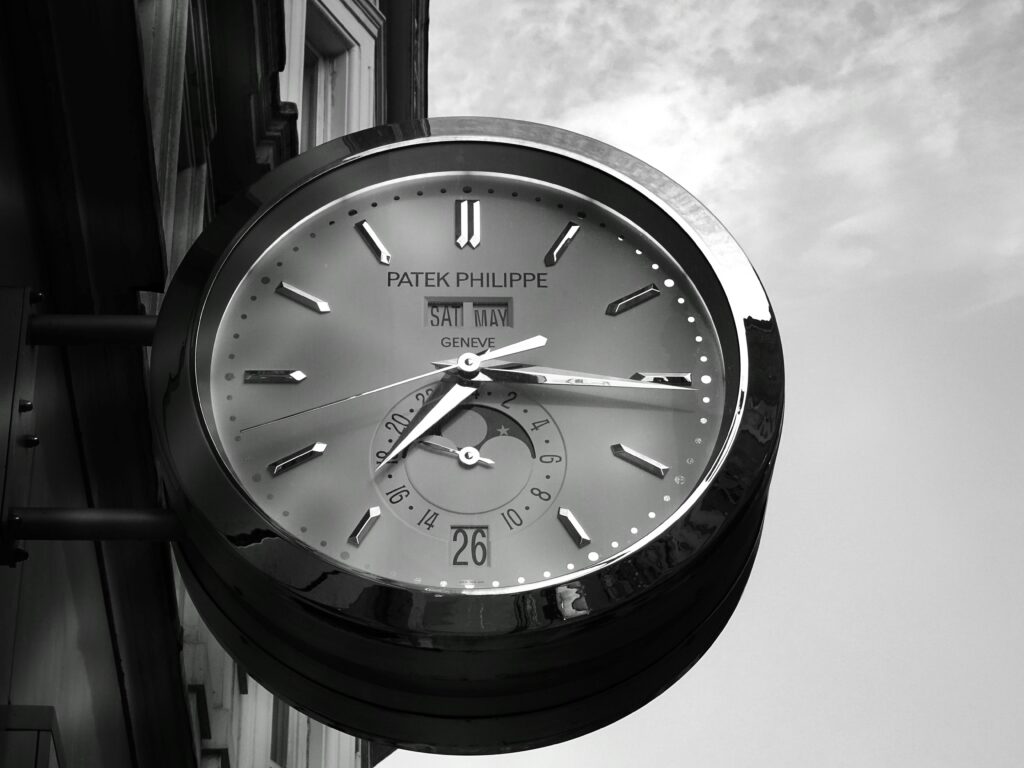
If watches were royalty, Patek Philippe would wear the crown—every timepiece is a miniature testament to meticulous Swiss engineering. Founded in 1839, Patek’s Nautilus and Calatrava models have become the overnight legends of horology, with some editions trading for 20 times their original retail prices at auction. Collectors debate model rarities like baseball stats, and if you crack their code, you’ve earned a golden ticket to horology’s inner circle. The brand’s motto, “You never actually own a Patek. You merely look after it for the next generation,” isn’t marketing fluff—it’s a promise built on legacy. Limited annual production—around 60,000 watches—makes each piece rarer than a solar eclipse. And those enamel dials and hand-finished movements? They’re like tiny works of art, assembled by artisans who might spend months perfecting a single component.
Buying a Patek isn’t just about telling time; it’s about securing a slice of family heirloom that might one day fund a new dream home. Their museum exhibits, showcasing archival prototypes, read like relationship histories between innovation and tradition. When you finally score one—brace for a waitlist longer than your most coveted concert—your wrist game instantly gains postgraduate status. Plus, Patek’s service centers will give your watch more TLC than a luxury spa day, ensuring it lasts centuries. Resale prices often climb at annual auctions, turning these watches into ticking assets that outpace many classic investments. So if you’re looking to convert your wristwear into a wall-safe legacy, Patek Philippe is the purest form of horological investment.
14. Coach
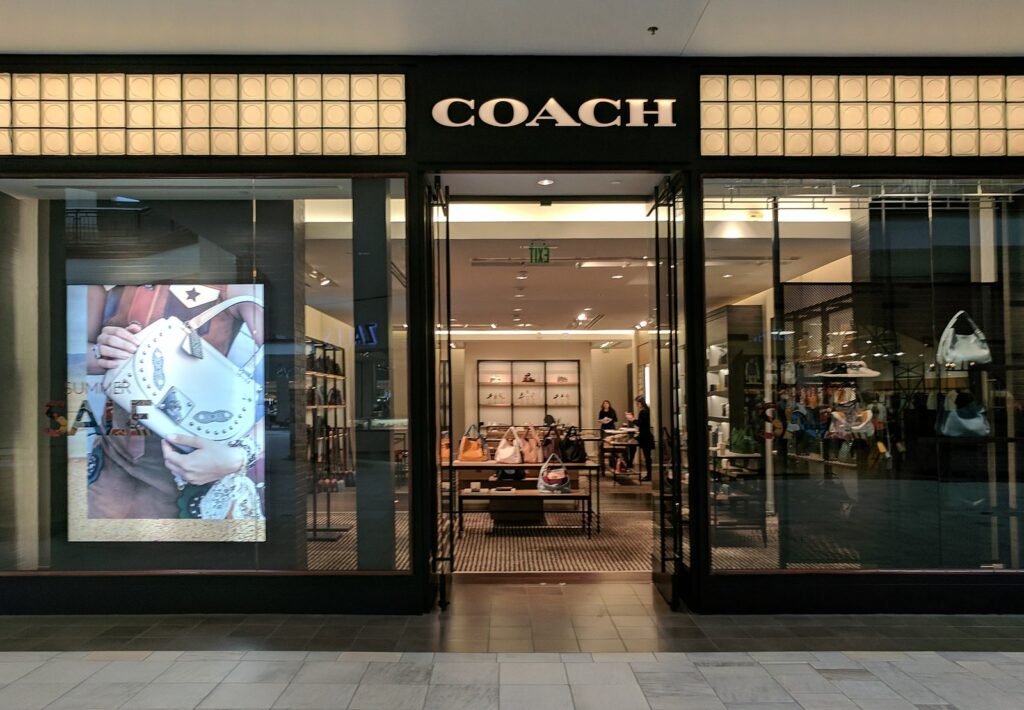
Coach used to be the underdog of leather goods, but that’s like calling Shakespeare an amateur poet—totally off the mark. The brand rebooted itself with fresh designs and tools to rival the big dogs, stepping up to a $6.9 billion valuation thanks to refined craftsmanship and smart collabs. Old-school trashy-chic tag no more—Coach’s commitment to sustainability has leather suppliers chasing higher ethical standards. Their leather workshop in New York City still hand-embosses those signature logograms, blending artisanal flair with downtown edge that feels somehow both nostalgic and new. Pop-culture mash-ups—like Coach x Disney—and seasonal runway drops turned the label into a collector’s dream, rather than a passport-friendly duty-free pit stop.
Every handbag now carries a story, whether it’s an archival shape revived or a street-art motif painted by hand. Resale platforms note that certain Coach pieces barely dip in value, making them accessible investment pieces for luxury beginners. The brand’s embrace of “accessible luxury” resonates with wallet-conscious millennials craving status without sacrificing smarts. Meanwhile, expanded categories—think footwear and small leather goods—are delivering big revenue bumps. Their in-house Studio designers rotate fresh color palettes and textures faster than you can hashtag #OOTD, keeping the momentum alive. And if you want a selfie backdrop, their flagship window displays in Soho and Times Square literally light up your grid. Coach may not shout its initials in neon, but those who know are too busy scoring VIP invites to their seasonal previews to care.
15. Tiffany & Co.
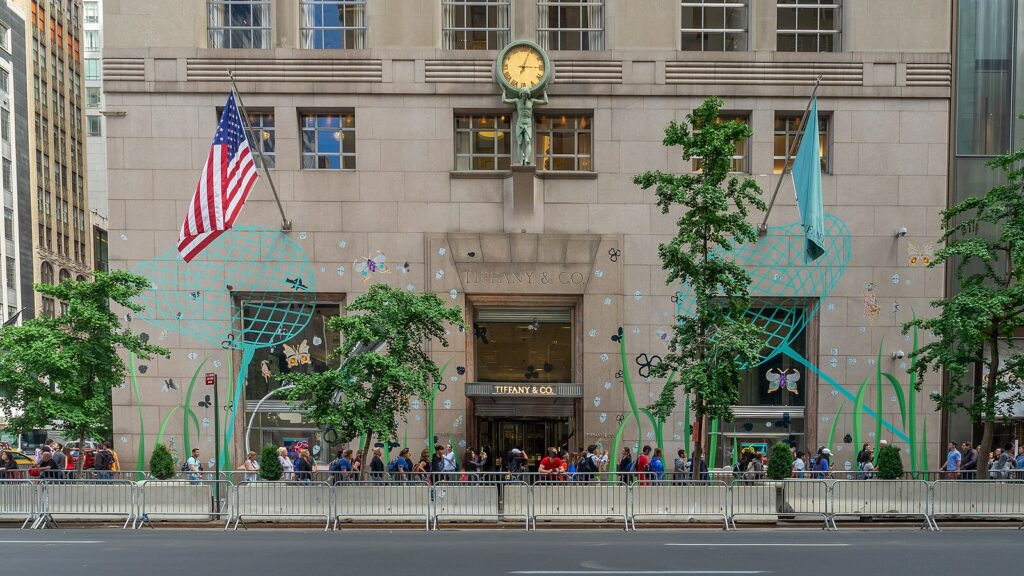
Tiffany’s robin-egg-blue box is basically the Sistine Chapel of gift packaging—instantly elevating the mundane to the epic. Every time you pop that box open, it’s like unwrapping a piece of American legend, complete with centuries-old craftsmanship and modern glam. Founded in 1837, the house has curated sparkling legends like the Tiffany Setting engagement ring, proving that some traditions never go out of style. From Savile Row-worthy silverware to high-jewelry birds of paradise, Tiffany isn’t afraid to push design boundaries while keeping that timeless elegance. Under LVMH, the brand has doubled down on heritage—pristine gemstones and hand-engraved motifs still get center stage, not social media filters.
Their archives hold sketches from Jean Schlumberger and Paloma Picasso, which often inspire limited-edition collections that sell out before launch-day hashtags even land. If you crave exclusivity, their bespoke services let you co-create one-of-a-kind pieces that skip resale markets altogether. Plus, their diamonds undergo the famous “Tiffany standard” cut—geometric perfection that sparkles more than a disco ball. Store events, like diamond workshops and “Tiffany Blue Hour” parties, turn shopping into experiences, not errands. Their gender-neutral chains and T1 collections bridge the gap between edgy and elegant, appealing to every generation. Even pre-owned Tiffany pieces maintain value, making the Blue Box feel like a vault rather than clutter. So, if you’re looking for a purchase that’s part jewelry, part folklore, Tiffany & Co. stands ready to deliver.
This article is for informational purposes only and should not be construed as financial advice. Consult a financial professional before making investment or other financial decisions. The author and publisher make no warranties of any kind.








